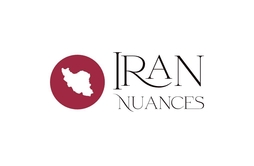The prisoner exchange between Iran and the United States has reached its conclusion, with the swap transpiring via Doha. Iran’s previously frozen financial assets, amounting to a substantial six billion dollars, have been fully transferred to banks in Qatar. Iran’s Central Bank governor Mhammad Reza Farzin, today on Monday said, “Yesterday, we received a letter from Qatari officials that accounts for 6 Iranian banks have been opened in Qatari banks. Today, more than 5.5 billion euros were deposited into the accounts of Iranian banks in the two Qatari banks”.
Among those released by the United States were Iranian prisoners Mehrdad Moin Ansari, Kambiz Attar Kashani, Reza Sarhangpour, Amin Hassanzadeh, and Kaveh Lotfollah Afrasiabi. Iran reciprocated by releasing prisoners of dual citizenship, namely Siamak Namazi, Morad Tahbaz, and Emad Sharqi. The identities of two additional freed individuals remain undisclosed, with speculation suggesting that one may be a female American prisoner. These individuals had been in jail on charges of espionage and had already served a portion of their sentences.
The individuals released from American custody were accused by Washington of aiding Iran in evading sanctions. In a recent weekly press conference, the spokesperson for Iran’s Foreign Ministry revealed that of the five Iranian citizens released, two chose to return to Iran, one will reunite with his family in a third country, and the remaining two opted to stay in the US.
This exchange was facilitated through the mediation of Oman and Qatar. Both countries played a direct and constructive role in the negotiation process until Tehran and Washington reached an agreement on the prisoner exchange and the release of a part of Iran’s frozen assets. Their mediation was instrumental in ensuring the smooth and complete implementation of the agreement.
On September 14th, Iran’s Foreign Minister Hossein Amirabdollahian and Qatar’s Prime Minister and Foreign Minister Mohammad bin Abdulrahman Al-Thani held a telephonic conversation discussing the latest developments regarding the transfer of Iranian money to Qatari banks.
However, the negotiation process was fraught with difficulties. In the months leading up to the announcement of the exchange agreement, numerous trips and telephone consultations were conducted between Iran, Qatar, and Oman as mediators. Similar exchanges took place between Muscat, Doha and Washington.
This exchange has been cited as a potential catalyst for nuclear negotiations. However, it is important to note that the US government’s decisions are influenced by the political landscape leading up to the 2024 presidential election in this country. This agreement has drawn increasing criticism from Republican rivals of US President Joe Biden, who have accused his administration of paying six billion dollars to Iran. Despite this criticism, White House officials have reiterated that these financial resources belong to Iran and have assured that Washington’s policies towards Tehran will remain unchanged. In line with this stance, Biden had pledged to revive the nuclear agreement during his 2020 presidential campaign.
Speculation persists regarding potential indirect negotiations on the sidelines of the UN General Assembly. The spokesperson for Iran’s Foreign Ministry commented on this possibility during today’s press conference saying, “We have pursued sanction relief through diplomatic talks thus far and have remained committed to negotiation and diplomacy. If there is an opportunity within this diplomatic framework for lifting oppressive sanctions and ensuring all parties’ responsible return to the JCPOA, including that of the United States, we will seize these opportunities. It is possible that talks and negotiations with mediators could take place on the sidelines of the UN General Assembly.”






